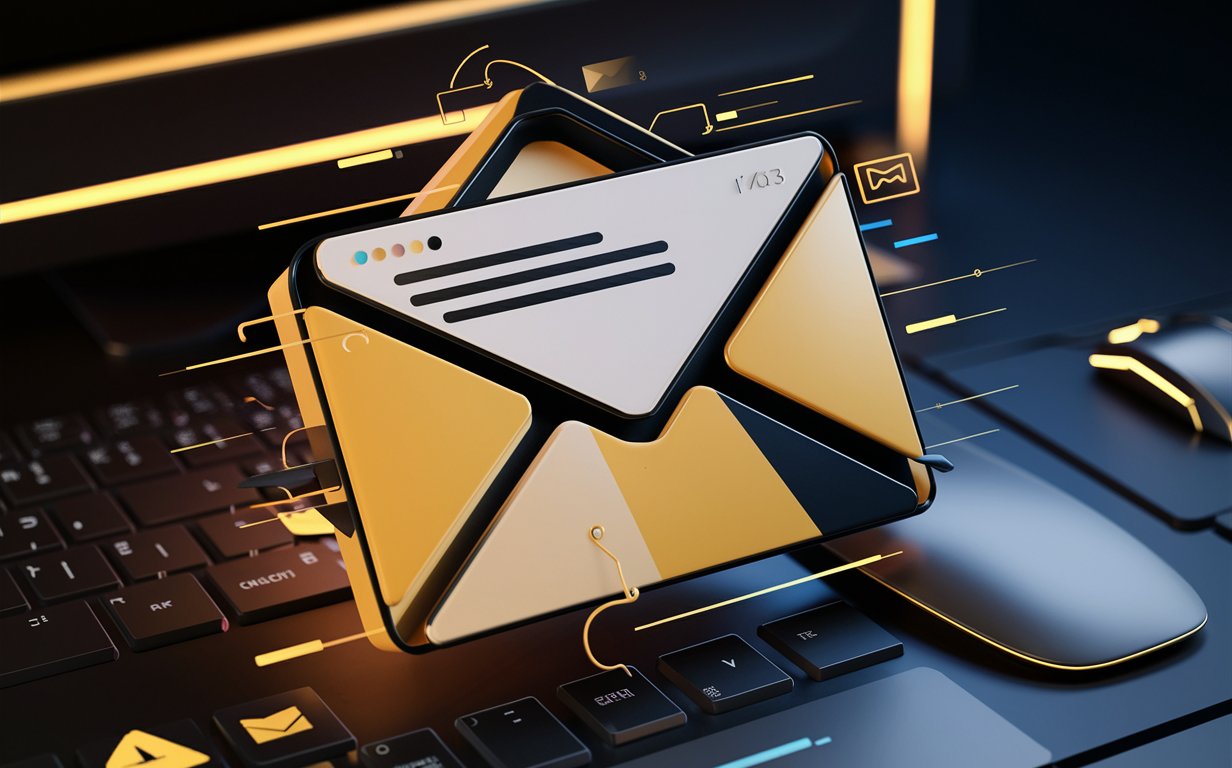Of all the email marketer nightmares, one of the worst is fading into the deep oblivion of a spam inbox. Low engagement, poor deliverability, and appearing on email blacklists could render even the best marketing ideas worthless.
Google added yet more stress to this. When Gmail introduced tabs in their inbox, essentially creating sub-inboxes for its users, the marketing world was frightened. Will anyone open promo messages? Won’t they just be ignored?
Relax. Landing into the promo tab can be actually be good for your business, and we have data to support that. Research by ReturnPath brings good news: the promo tab has 90% deliverability, 14% read rate, and only 0.12% “This is spam” rate – the lowest of all the tabs. If you’re into promotional campaigns, this is a signal to make friends with the promo tab and understand how to manage it.
In contrast, you will always want to avoid the spam folder. How to make sure your legitimate emails aren’t marked as spam but reach the appropriate inbox? We have some guidelines for you.
Spam folders and promo tabs
How harmful are those folders? Let’s start with a quick explanation.
Promo tab
The promo tab is a separate section in a user’s Gmail inbox where algorithms place most commercial newsletters: offers, special discounts, and other campaigns. Although some marketers are still reluctant about this idea, after several years, 79% of Gmail users still keep the promo tab.
It also means that your customers access your messages when they’re in the mood for shopping. Research shows that people read commercial messages at almost the same rate as before Gmail introduced tabs. From their perspective, it’s a second inbox where they can find exciting offers.
Spam folder
The spam folder is a totally different story. Usually, there’s little chance someone finds your email there unless they’re told to look there or are used to such problems. When your messages land in spam folders, it gets reflected in your open rates because your subscribers don’t get the chance to even notice your emails. It also impacts your sender reputation and decreases the probability of you reaching your audience.
Why do legitimate emails hit spam folders?
Let’s tackle the big problem first. If your messages land in spam folders, although they are legitimate, it’s because spam protection algorithms aren’t perfect. They’re created to protect the recipients from unwanted messages, and if yours has any triggers that fire the spam protection then it will be tarred with that brush.
The best way to protect yourself from being treated as spam is to know what triggers those algorithms use and avoid falling into their traps.
#1 You have a poor sender reputation
Let’s start with how mailboxes perceive you as a sender. It depends on how your subscribers react to your messages.: The recipients either engage with your emailsthem, ignore them, or mark them as spam. As a rule of thumb,: the higher the engagement, the better the reputation – although there’s no simple algorithm to achieve a high ranking.
This factor is crucial for your email deliverability: whether your emails lands in the recipient’s main inbox, spam folder, or gets rejected. When your messages are marked as spam, get added to blocklists, or cause a peak in unsubscriptions, your reputation decreases. Similarly, when they are opened, forwarded, responded to, or links within are clicked on, your sender reputation increases.
What can you do about it?
- Regularly check your sender score – one way to work on your reputation is to check your sender score. Multiple services offer such checks such as Sender Score from Validity, the company behind ReturnPath. It gives you an insight into how mail services perceive your IP.
Also, you can count on your email delivery service. It works with the most important organizations in the industry to address any deliverability issues and gather insights about taking care of your sender reputation.
And what about other factors? Don’t worry – we will cover them in the following points.
#2 You use triggering words in your messages
Spam filters also pay close attention to the content and wording you use in the subject line and body messages. Words and phrases like “this is not spam”, “guarantee”, “special promotion”, long or suspicious links, weird punctuation, or use of uppercase letters fire red flags.
What can you do about it?
- Learn what should be avoided – when you craft your messages, make sure to check not only for the best case practices but also for negative examples. You can even creatprepare a checklist and tick off all the points as you prepare your copy.
#3 You don’t engage your audience
The way your audience interacts with your messages impacts your business goals and your future email campaigns. That’s why working on all aspects of engaging your audience is crucial. It’s a tough challenge, so don’t expect to notice changes overnight.
What can you do about it?
- Analyze the performance of your emails – don’t just watch your data, make sense out of it. Experiment with formats, topics, send time, run A/B tests, and learn what works for you. Also, think about asking your subscribers for feedback and invite them to reply.
- Consider clearing up your list – from time to time, you can delete those users who haven’t been active for a while from your list. If you are worried about shrinking your audience, look at the positive aspects. You’ll get a higher engagement rate, better feedback from your audience, and you won’t pay for the users you don’t reach anyway.
- Get inspired – seeing what others do can give you many ideas. ReallyGoodEmails is a treasure trove for all email message creators. Observe the best practices, analyze newsletters from the biggest brands, and test what works in your case. Plus, we suggest you sign up for their newsletter – there’s a lot you canto learn from it!
#4 You don’t use reliable IP addresses
Your IP address can trigger some spam filters as well. What’s worse, all the previous and future users of that IP will impact your sender reputation. If anyone sends a spam campaign, it will backfire on your actions. That’s why you should pay special attention to your IP address.
What can you do about it?
- Choose your IP address provider carefully – have control over your reputation and send your email newsletters using high-quality IP addresses. It doesn’t mean that you have to splash out for a dedicated IP, though. Shared IPs are an efficient solution and might even improve your reputation: together with others, you can send more legitimate emails and your ratings can increase.
How can you choose a reliable shared IPs provider? Take a look at the admission process. The more detailed it is, the greater themore chance they have a high-quality user base. Usually, the effect is well worth the effort and costs.
#5 Your messages get marked as spam
When your messages get marked as spam, it’s like an alarm bell ringing. They can be classified spam either by inbox filters or by your subscribers. To tackle the problem appropriately, figure out when they get marked as spam. This will tells you if the problem lies with the filters or in subscribers’ perception.
When your subscribers mark your messages as spam, it’s a call for you to rethink your email marketing campaigns. Are you delivering the message to the right audience? Does it look legitimate? Do you use any shady practices? Asking yourself tough questions can help you get to the root cause.
What can you do about it?
- Find the root cause – look carefully at your previous messages and spot what could lead your subscribers to mark them as spam. Start with your headline and tagline, which is where you make the first impressions and when people may mark you as spam right away. Then, analyze the message and the contents.
Also, don’t forget to check if your email delivery service has email set up authentication methods, like SPF or DKIM set up. Look for the DMARC policy as well. For example, it automatically adds SPF and DKIM authentication headers to your emails, which minimizes the chance of them being rejected by Gmail.
After coming up with some hypotheses, make sure you test them out and learn what works. Especially if you’re new to the email marketing industry, you might make mistakes, so use them as an opportunity to learn.
#6 Your sender name is inappropriate
Take a look at your email address and sender name. Do you send all the types of messages – promotional, transactional, and support – from one account? That could lead to them landing in spam folders. Also, check if your sender name is transparent. If it seems misleading, it might also be a reason for your messages to be flagged as spam.
What can you do about it?
- Create several “From: header”s” – think about creating separate email addresses and names for support, notifications, and promotional purposes. This way, your sender name will be consistent with the email type and spam filters won’t get triggeredtrigger.
#7 You don’t comply with the law
This is probably the most important point: you need to comply with anti-spam laws and regulations. We’ve gathered the must-have international points here, but make sure to double-check for additional requirements in the area you’re operating.
What can you do about it?
- Email only the people who have expressed consent – don’t buy, rent, scrap, or share email addresses. You need to obtain consent from your recipients to confirm that they want to receive messages from you. The best option is for a double opt-in: after accepting to receive your newsletter in a pop-up on your website or anywhere else, for example, you send an email to confirm the subscription.
- Make sure you include a physical address – even if your business is based entirely on the Internet and you work from wherever you want, you have to add a physical address. For some countries, it’s a legal requirement. If you run your business from home and don’t want to share your street address, think about renting a post office box.
- Provide an option to unsubscribe from your emails – this is another must-have point. If your recipients change their minds and no longer want to receive your emails, they should have an easy and simple way to unsubscribe. The most convenient method is to include a link at the end of each email.
Treat it as an option to find out how people respond to your messages. Also, it’s better to have a smaller but more engaged audience than lots of people who don’t even open your messages.
Bonus tip: Keep your eye on Google recommendations
To make sure you follow the best practices, it’s a good idea to learn from the sources and understand what makes inbox providers mark messages as spam. Google regularly updates a list of tips on how to avoid being treated as spam – and since Gmail reached 1.8 billion active users in 2020, you need to stay up to date with its practices. Often, Google sets the tone for other email providers. Here, you can check what the present requirements are and keep on top of them.
And what about the promo tab?
As we mentioned before, the promo tab can actually help your marketing campaigns. In this section, you’ll learn what to do if your message isn’t classified correctly and what to do in order to stand out from other emails in the promo tab.
Your messages don’t land in the appropriate tab
Although Google mechanisms are pretty advanced, research led by ReturnPath shows that almost 10% of Gmail users think that their emails aren’t accurately sorted. A misclassified email is likely to get lost in the recipient’s inbox, as it won’t appear where expected. That’s why it’s important to learn where Google places your messages.
What can you do about it?
- Make it obvious what type of message you’re sending – being straightforward will help not only the algorithms, but also your regular non-Gmail subscribers. Make sure your sender name, message title, content, and structure are easy to recognize and categorize. More technical aspects, like if it’s a bulk message or directed to a particular person, will be reflected in the Gmail categorization.
You want to improve your results
If your email results are decent, yet you still (naturally) strive to improve them, trying to avoid the promo tab might not be the solution. If you remember the research we’ve already mentioned, people are generally happy with their promo tabs and use them to look for interesting offers and mailings.
What can you do about it?
- Don’t worry about landing in the promo tab – focus on other aspects, as investing your energy to land in the primary inbox can be a waste of time. Not only because it’s hard, but also because if you succeed and land in the primary inbox, your subscribers may feel invaded and move you back to the promo tab.
The promo tab is full of other promotional emails, and you have to focus on standing out. Instead of trying to land in a different tab, work on providing your subscribers with value. From formal aspects like the title line and the copy to the content and ideas you share, there’s a lot to tackle. Test what works in your case and improve your campaigns with each message.
Final words
The divided inbox requires a different approach from your side but can bring many benefits: it has created another place where your customers have learned to buy from. They are unlikely to mark your messages as spam, yet another challenge arises: you have to stand out from the crowd.
Nevertheless, the spam folder remains a section where you don’t want to land. Make sure to comply with the timeless rules for avoiding spam marking and keep an eye on the newest regulations. This is a must-have for any type of emails.
Working on hard data is one of the crucial elements of success.




